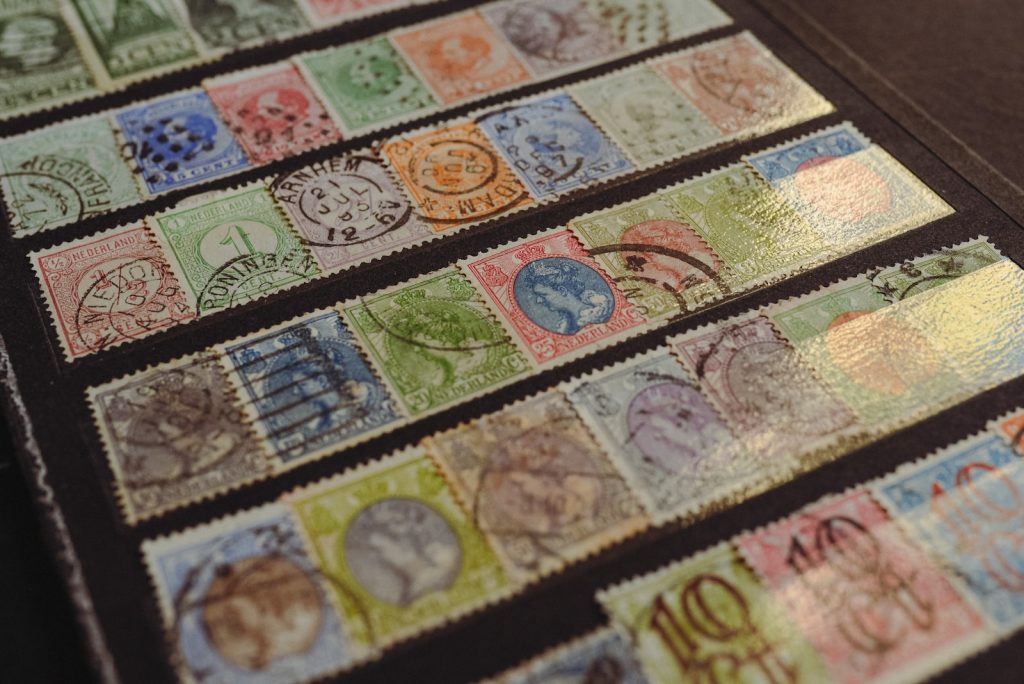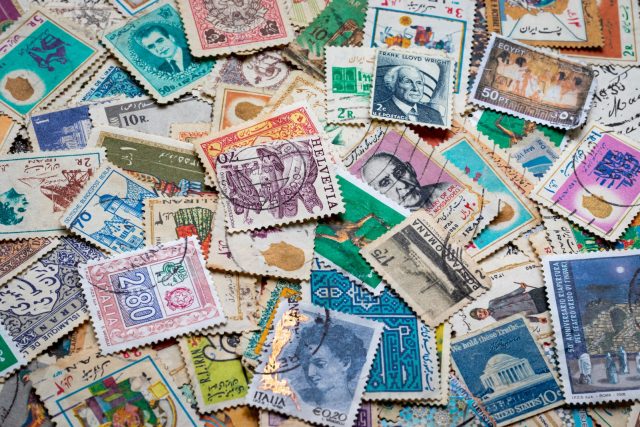Collecting stamps is a beloved hobby of many, but it can be intimidating to newcomers. It involves more than just looking for rare and valuable stamps; knowledge of philately, or the study of stamps, is essential in stamp collecting. This article will introduce the philately field, discussing various aspects such as the history of stamp collecting, the types of stamps available for collection, and modern stamp collecting trends.
What is Philately?
Philately is the study and collection of postage stamps and related materials, such as postmarks, covers, and other postal history artifacts. It is a popular hobby worldwide, enjoyed by millions of people who find joy and satisfaction in pursuing new and rare stamps. Philatelists, as collectors of stamps are called, are fascinated by the history, design, and production of stamps, as well as the cultural and social significance of the images and themes depicted on them. Philately is a highly educational hobby, as it can teach collectors about geography, history, politics, art, and many other subjects. The study of philately has also led to the discovery of new postal history facts and contributed to the preservation of important cultural artifacts.
Stamp Acquisition: Where and How to Buy
Stamp acquisition is an essential aspect of philately. Collectors can acquire stamps from a variety of sources, including online marketplaces, stamp shows, specialized dealers, and postal services. One of the most popular ways to acquire stamps is through online marketplaces, such as eBay and Amazon. These platforms offer an extensive selection of stamps worldwide, and collectors can browse and purchase stamps from the comfort of their homes. However, it is crucial to ensure that the seller is reputable and the stamps are genuine before making a purchase.
Stamp shows are also excellent places to buy stamps. These events bring together collectors, dealers, and enthusiasts from around the world and provide an opportunity to browse and purchase stamps and meet and network with other collectors. Specialized dealers are another option for stamp acquisition. These dealers typically have extensive knowledge and expertise in specific areas of philately, and can provide advice and guidance on building a stamp collection.
Postal services can also be a source of stamps for collectors. Many postal services offer subscription services, where collectors can receive new stamps directly from the post office on a regular basis. Some postal services also offer limited edition or commemorative stamps, which can be a valuable addition to a collection.
Regardless of the source, it is essential to ensure that the stamps are genuine and in good condition. Collectors should also be aware of the market value of the stamps they are purchasing, and do their research to avoid overpaying for stamps. With a bit of diligence and research, collectors can acquire stamps from various sources and build an impressive collection over time.
Cataloging: Organizing Your Collection

Is an important aspect of philately, as it allows collectors to organize and keep track of their stamp collections. Cataloging involves creating a detailed inventory of the stamps in a collection, including information such as the country of origin, the year of issue, the denomination, and any other relevant details.
A stamp catalog is one of the most popular tools for cataloging stamp collections. Stamp catalogs are comprehensive guides that provide detailed information on stamps worldwide, including images, descriptions, and values. Some popular stamp catalogs include the Scott Catalog, the Stanley Gibbons Catalog, and the Michel Catalog.
To catalog a stamp collection, collectors can use various methods, including creating a physical inventory using pen and paper, a spreadsheet or database, or specialized software designed for stamp collecting. Regardless of the method, it is essential to include as much information as possible for each stamp in the collection to make it easy to locate and identify individual stamps.
Organizing a stamp collection is another important aspect of cataloging. Collectors can organize their stamps in a variety of ways, including by country, theme, or subject, by date of issue, or by denomination. It is important to choose an organizing system that works best for the collector and that allows for easy access and retrieval of stamps.
In conclusion, cataloging is an important part of philately that allows collectors to keep track of their stamp collections and organize them for easy retrieval and identification. With the help of stamp catalogs and various cataloging methods, collectors can create an inventory of their stamps that is comprehensive and easy to use.
Identifying: What Makes a Stamp Valuable?
Identifying the factors that make a stamp valuable is a crucial part of philately, as it helps collectors determine which stamps to acquire and which to exclude from their collections. The value of a stamp can be affected by various factors, including its rarity, age, condition, and historical significance.
Rarity is one of the most significant factors that can make a stamp valuable. Stamps that are produced in limited quantities or that have been discontinued can become highly sought after by collectors, driving up their value. Age is another factor that can make a stamp valuable. Older stamps in good condition and well-preserved over time can command higher prices due to their rarity.
Condition is also an essential factor in determining the value of a stamp. Stamps in pristine condition, with no tears, creases, or stains, are generally more valuable than those damaged or worn. Historical significance can also make a stamp valuable. Stamps that commemorate significant events, people, or places can be highly sought after by collectors interested in preserving a piece of history.
Other factors that can affect the value of a stamp include its design, its popularity among collectors, and its origin. For example, stamps from countries that are difficult to obtain or have unique designs may be more valuable than stamps from more commonly collected countries.
In conclusion, identifying the factors that make a stamp valuable is essential to philately. By considering factors such as rarity, age, condition, historical significance, and design, collectors can determine which stamps to acquire and add to their collections. With careful research and attention to detail, collectors can build a collection of stamps that is both valuable and personally meaningful.
Researching: Digging Deeper into History
Researching is a vital aspect of philately, as it allows collectors to dig deeper into the history and context of the stamps they collect. By researching the background and significance of a stamp, collectors can gain a deeper appreciation of its cultural, historical, and artistic value.
One of the most important aspects of researching stamps is understanding the context of their creation. This can involve researching the political, social, and economic conditions of the country in which the stamp was produced and the events or individuals that the stamp commemorates. Collectors can also research the production and printing process of the stamp, which can provide insights into its design and rarity.
Another important aspect of researching stamps is understanding their value in the philatelic market. This can involve researching recent auction prices, consulting stamp catalogs, and seeking the advice of experienced collectors or dealers. By understanding the market value of a stamp, collectors can make informed decisions about buying, selling, or trading stamps in their collection.
Researching stamps can also provide opportunities for collectors to connect with other enthusiasts and experts in the field. Attending stamp shows, joining online forums, and participating in stamp clubs can allow collectors to share their knowledge and learn from others, as well as acquire new stamps and expand their collections.
In conclusion, researching stamps is an essential part of philately that can provide collectors with a deeper understanding and appreciation of the history and significance of their collections. By researching the context of a stamp’s creation, its value in the market, and its cultural and artistic significance, collectors can build a personally meaningful and historically significant collection.
Preservation: Protecting Your Investment
Preservation is a crucial aspect of philately, as it allows collectors to protect their investment in stamps and maintain their value over time. Stamps are fragile and can easily be damaged by environmental factors, such as light, heat, moisture, and dust. Proper preservation techniques can help prevent damage and ensure that stamps remain in excellent condition for years to come.
One of the most important preservation techniques for stamps is proper storage. Stamps should be stored in a dry, cool, and dark place to prevent light, moisture, and heat damage. Acid-free archival storage materials, such as stamp albums or protective sleeves, can protect against dust or handling damage.
Another important preservation technique is the careful handling of stamps. Stamps should be handled with clean hands and using specialized stamp tongs or tweezers to avoid damage from fingerprints, oils, or other contaminants. Stamps should also be protected from bending or creasing and should not be glued or taped to any surface.
Regular maintenance of stamp collections is also essential for preservation. Collectors should regularly inspect their stamps for signs of damage or deterioration and take appropriate action to address any issues, such as removing or replacing damaged stamps or cleaning and re-mounting stamps that have become dislodged or discolored.
In conclusion, preservation is an essential aspect of philately that can help protect the investment of stamp collectors and ensure that their collections remain in excellent condition for years to come. Proper storage, careful handling, and regular maintenance are essential preservation techniques that can help prevent damage and maintain the value of stamps over time. With the right preservation techniques, collectors can build a valuable and well-preserved collection.
Conclusion: Enjoy the Hobby!
In conclusion, philately is a fascinating hobby that offers collectors the opportunity to explore history, culture, and art through the study and collection of stamps. Whether collecting stamps from a particular country or time period, or focusing on a particular theme or subject, there is no limit to the variety and richness of stamps that can be collected.
While the pursuit of rare and valuable stamps can be exciting and rewarding, it is also important for collectors to remember to enjoy the hobby for its own sake. Collecting stamps can provide a sense of personal fulfillment, relaxation, and even social connection through participation in clubs or shows.
Ultimately, the joy of philately lies in the opportunity to discover and appreciate the beauty and history of stamps and the satisfaction of building a collection that reflects one’s interests and values. By approaching the hobby with curiosity, enthusiasm, and a willingness to learn, collectors can create a collection that is both meaningful and enjoyable.






























